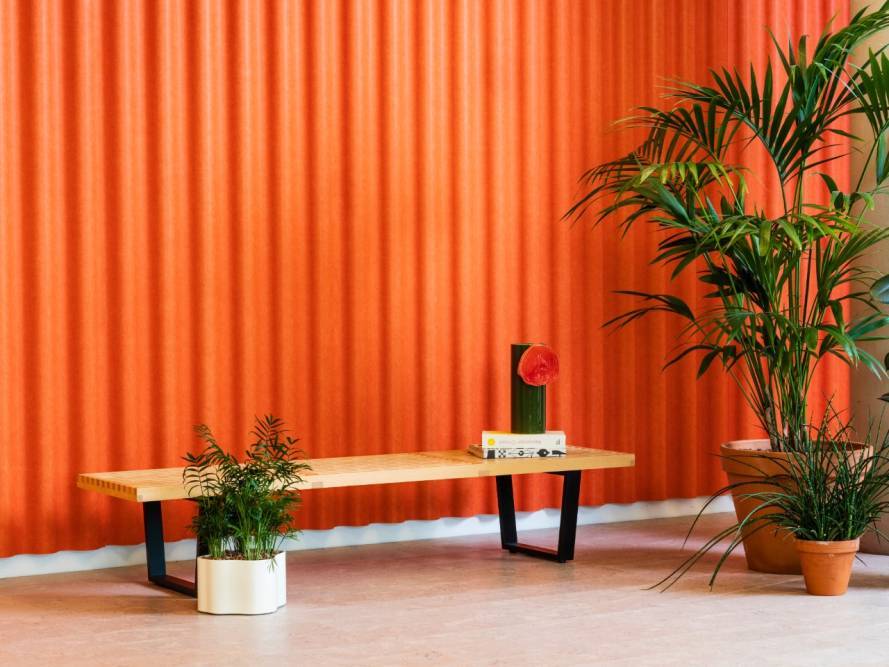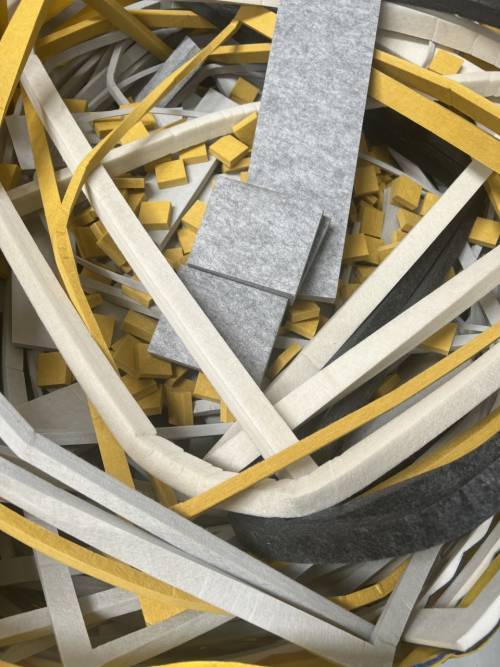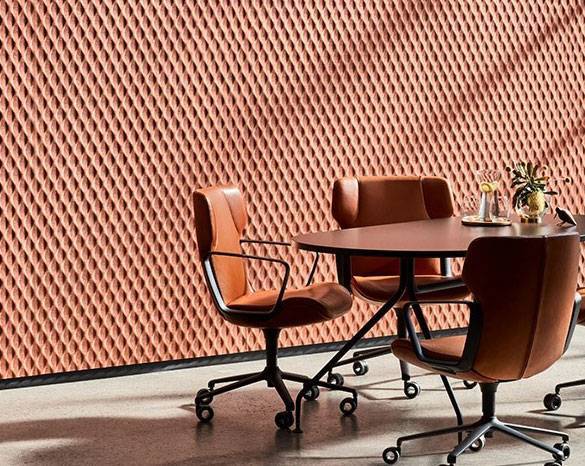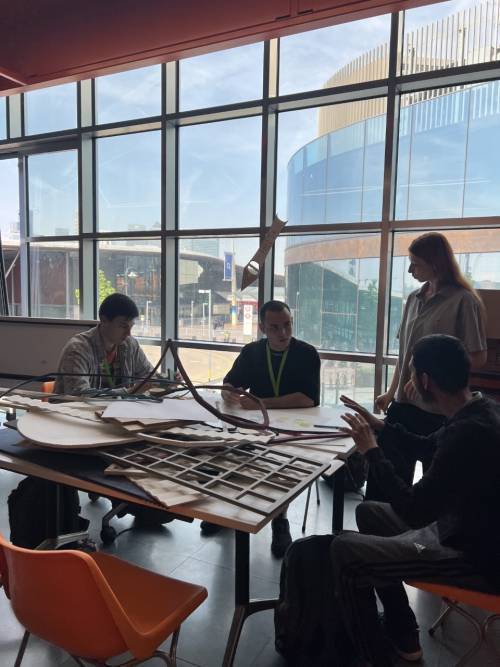How to live and breathe sustainable design with The Collective Agency

Article by: Gaynor Orvis
Publication date:The Collective Agency is a leading product design company with a key focus on the sustainability and ethics of design. They recently hosted a design 'hack' at Ravensbourne with BA (Hons) Product Design students and 40 students from Madrid's ESNE (Escuela Universitaria de Diseño, Innovación y Tecnología).
We caught up with Sophie Cappe, the Design and Sustainability Manager at The Collective Agency, to delve into sustainability and explore the fundamental role it plays within the business.
Can you explain a bit about the collaboration with Ravensbourne and how it came about?
We really enjoyed it, it was a really rewarding day for us, and hopefully for the students too.
Firstly, we introduced ourselves to the students and explained a bit about The Collective Agency, so who we are, our ethos and what we produce.
Then we started looking at the leftover material that we’d brought with us. It was really interesting to see how the students interacted with the material. As an example, one group was using a lighter and burning the material – we saw some really creative ideas. The students asked some great questions too.
The opportunity came about because our marketing director reached out to Ravensbourne to ask if the product design students could make use of our leftover material. By reaching out to Ravensbourne, it was our aim to help to inspire the next generation of designers and to support their creative education.
Can you tell us a bit about how sustainable design is integrated into your brand ethos?
For us at The Collective, our commitment to minimising our environmental impact affects everything we do. That really is at the core of our brand ethos.
It is at the crux of every business decision we make. We only work with brands and materials that have sustainability at their core, too.
Why do you think it's important for design companies to work with the next generation of designers?
They are our future clients, and they will be the ones specifying the products. In some industries, like the building and the construction industry, it is now a mandatory requirement to obtain certifications to specify that the materials used are sustainable – or at the very least don’t cause any harm to the environment.
By teaching students about sustainability, it means that it is already ingrained in their minds when it comes to making important decisions about which materials to use in their careers.
Do you think there's a growing movement within the design industry as a whole to adopt ethical design processes, or do you feel that you're still in the minority?
I think there is definitely a growing movement. You can see there are a lot more companies talking about it.
But just because you are part of the conversation around sustainability, doesn’t mean that it's really integrated into your business processes. For a lot of companies, sustainability is still very surface level – it's not ingrained deep into the decisions of the company.
For that reason, I think we are in the minority because we proactively practice what we preach. For us, it is a constant work of improvement. We are committed to continually improving our practices, and that really boils down to every single decision that we make as a business.
What are some other main barriers to sustainable design?
I think information and processes because operating sustainably isn’t easy. Sustainability certainly isn’t new, but at the same time, as a society, we are still in our infancy when it comes to figuring out how best to things.
There is no textbook to tell us how to do it, so it is still very much trial and error. For that reason, I think lack of information is still a major barrier. It means that businesses have to take the time and the investment to examine and change their own processes – and that’s not an easy task. Sometimes businesses can’t afford to take the time to invest in this area too.
Often, sustainability just isn’t one of the main factors when it comes to making a decision and it can be left out of big decisions.
Sometimes the technology is just not there either. On the positive side, the technology is continually improving though.
What steps can companies take to improve the overall sustainability of their design processes?
I think a quick win is to make sure the product is locally sourced. I would also say it is important to identify the area of the company that has the most carbon emissions and to try to find solutions to minimise this.
I think it’s important to remember that not everything can be done overnight. It is about putting one step in front of another.
Finally, do you have any advice for a graduating student looking to pursue a career in sustainable design?
Be inspired to keep learning and to be curious. Always look for opportunities to go to trade shows, for example, the Surface Design Show in London – it’s a great opportunity to get familiar with new materials.
I think as designers, we never switch off – we are inspired by anything and everything around us. The same can be said for sustainability; you have to have that mindset 24/7.
Choosing the right materials is a big responsibility, because every decision makes an impact on the environment, and that’s something that should be considered carefully.








